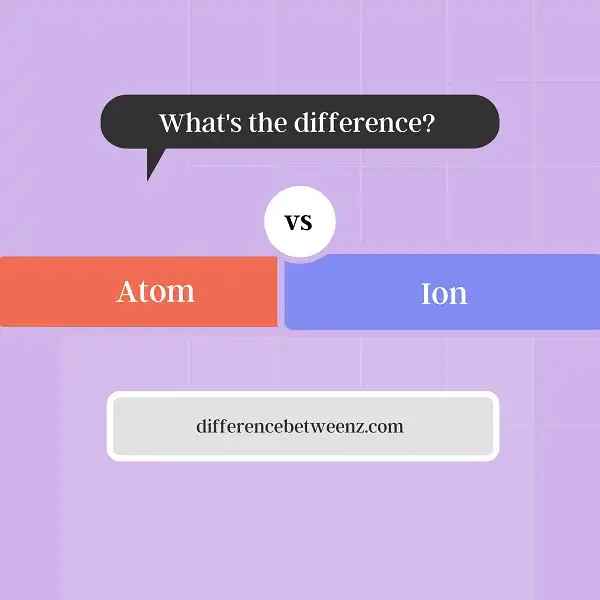Atom and ion are two words that are often confused with each other. While they have some similarities, there is a big difference between atoms and ions. An atom is the smallest particle of an element that has the chemical properties of that element, while an ion is created when an atom loses or gains electrons. This can change the atom’s chemical properties, which can impact how it behaves in a reaction. Understanding the difference between atom and ion is important for chemists and other scientists who are working in the lab.
What is Atom?
An atom is a basic unit of matter that consists of a central nucleus composed of protons and neutrons with one or more electrons orbiting around this nucleus. The term “atom” comes from the Greek word for indivisible because it was once thought that atoms were the smallest things in the universe and could not be divided. However, we now know that atoms are actually made up of smaller particles, such as protons, neutrons, and electrons. Although atoms are extremely small, they are very important because they are the building blocks of all matter in the universe.
What is Ion?
- An ion is an atom or molecule that has gained or lost one or more valence electrons, giving it a net electrical charge. If an atom loses an electron, it becomes a positive ion, and if it gains an electron, it becomes a negative ion. Ions are formed when atoms interact with each other in order to reach a stable octet configuration, and they are held together by electrostatic forces.
- Ions are found in both ions and ionic compounds. Ionic compounds are formed when cations and anions are bound together through ionic interactions. These interactions occur when the oppositely charged ions attract each other. For example, Na+ (sodium) and Cl- (chlorine) form table salt, or NaCl.
- Ionic compounds generally have high melting and boiling points because of the strong ionic interactions between atoms. They are also typically soluble in water. When dissolved in water, the ions interact with the water molecules to form hydration shells around them. This process is known as solvation.
Difference between Atom and Ion
- Atoms and ions are both figments of the imagination, used by scientists to explain the behavior of matter. Though they might sound similar, there are some key differences between atoms and ions.
- An atom is the smallest particle of an element that has the chemical properties of that element. The term “atom” comes from the Greek word for indivisible because it was once thought that atoms were the smallest things in the universe and could not be divided.
- Ions are atoms that have gained or lost electrons, giving them a net charge. When an atom loses an electron, it becomes a positive ion. When an atom gains an electron, it becomes a negative ion. Ions are held together by electrostatic forces, which are attractive forces between particles with opposite charges.
- The number of protons in an atom’s nucleus determines what element it is. For example, all atoms with six protons in their nucleus are carbon atoms. The number of protons in an atom’s nucleus also determines its chemical properties.
- Atoms can bond together to form molecules, which are larger units made up of two or more atoms.
Conclusion
Atom and ion are two different types of particles. An atom is the smallest particle of an element that has the chemical properties of that element. An ion is a particle that has gained or lost one or more electrons and has a net electric charge. In chemistry, atoms and ions are important because they interact with each other to create molecules.


